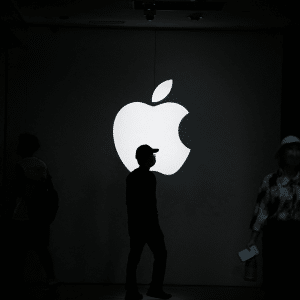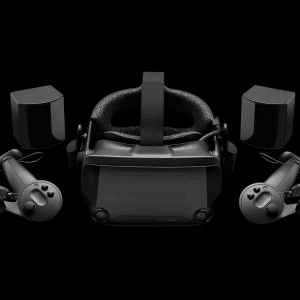For years, whispers about a foldable Apple device whether a tablet, laptop, or hybrid of both have intrigued technology enthusiasts. Now, new reports suggest Apple could be working on a foldable iPad featuring an 18.8-inch display, aiming for a potential release as early as 2028.
The concept alone has sparked excitement and curiosity, particularly among heavy iPad users like myself. The possibility of a device that seamlessly bridges the gap between tablet and laptop functionality is a dream I’ve long had. But as promising as this rumored foldable iPad sounds, it leaves us with many important questions.
What We Know So Far About Apple’s Foldable iPad
The latest update comes from Bloomberg’s Mark Gurman, who has been a reliable source for Apple-related news over the years. According to Gurman, Apple’s designers are currently developing a foldable device that can unfold into the size of two iPad Pros placed side by side. This puts the display size at around 18.8 inches, an unprecedented leap for Apple’s iPad lineup. The product has reportedly been in development for a couple of years already, with a tentative release timeline set between 2028 and 2030.
The leak lines up with a document posted recently on social media, which appeared to outline Apple’s display plans for future devices. While foldable screens have already been explored by companies like Samsung and Lenovo, Apple has so far refrained from entering the foldable market. This latest report suggests Apple is taking its time to ensure that a foldable iPad offers something truly innovative rather than simply following industry trends.
For those of us who have been long-time iPad users, this news is particularly exciting. Apple’s foldable device has the potential to redefine what an iPad can do, addressing long-standing limitations and opening new doors for productivity and creativity.

Why a Foldable iPad Could Be a Game-Changer
The iPad has come a long way since its debut in 2010. Initially, it served as a convenient third device, filling the gap between an iPhone and a Mac. It was portable, user-friendly, and great for reading, browsing, and light tasks. However, things took a significant turn in 2015 with the release of the iPad Pro.
The iPad Pro was Apple’s first attempt at turning the iPad into a laptop replacement. With its larger screen, powerful hardware, and accessories like the Apple Pencil and Magic Keyboard, it redefined the possibilities of tablet computing. Since then, I’ve used the iPad Pro as my primary computer for nearly a decade, but not without its compromises.
For example, the 13-inch iPad Pro is excellent as a laptop, but its size makes it awkward for tablet use, especially when holding it for extended periods. On the other hand, the 11-inch model is much better for portability and handheld use but feels limited as a workspace due to its smaller screen.
This is where the rumored foldable iPad comes into play. By combining the portability of an 11-inch device with the expansive screen real estate of an 18.8-inch display, Apple could create a product that truly balances tablet and laptop functionality. Imagine a device that folds up to be easily portable yet unfolds into a workspace large enough to accommodate multitasking, creative projects, and immersive media consumption.
The Biggest Questions That Remain
While the idea of a foldable iPad is exciting, there are still many unanswered questions that temper my enthusiasm. Here are three key areas where Apple will need to deliver thoughtful solutions:
How Will Tablet Mode Work?
One of the most significant concerns is whether the foldable iPad will support a half-screen mode that mimics the experience of an 11-inch tablet. For many users, this would be a critical feature to ensure the device feels usable in handheld form. Without it, the foldable iPad risks being as cumbersome as the current 13-inch iPad Pro—or potentially even worse.
The ability to switch between a compact tablet mode and a full 18.8-inch display would allow for far greater versatility, catering to both casual use and heavy productivity. If Apple cannot nail this aspect of the design, the foldable iPad may fail to live up to its potential.
What About Keyboard Compatibility?
Another question is whether Apple will offer a physical keyboard solution similar to the current Magic Keyboard. The Magic Keyboard has been a game-changer for iPad Pro users, transforming the device into a legitimate laptop alternative. However, a foldable form factor might make it difficult to integrate a traditional keyboard case.
While an on-screen digital keyboard could be enhanced to take advantage of the larger display, many users, myself included, prefer the tactile feel of a physical keyboard for extended typing sessions. It will be interesting to see if Apple can develop a keyboard solution that works seamlessly with the foldable design.
Can iPadOS Keep Up?
Perhaps the biggest unknown is how iPadOS will evolve to take advantage of the foldable iPad’s unique capabilities. While Apple has made improvements to iPadOS over the years, the multitasking experience still feels limited compared to macOS. With a device that could feature an 18.8-inch display, Apple has a chance to rethink how iPadOS handles multitasking, window management, and productivity tools.
If the foldable iPad launches with the same version of iPadOS that we have today, the extra screen space may feel underutilized. Fortunately, Apple has several years to address this and create a software experience that matches the ambition of the hardware.
Why Apple’s Approach Matters
Apple’s hesitation to enter the foldable market speaks volumes about its approach to product development. Unlike other companies that have rushed to release foldable devices, Apple typically waits until the technology and user experience are mature enough to deliver real value to customers. This philosophy has served Apple well in the past, as seen with products like the Apple Watch and Face ID.
If and when Apple does launch a foldable iPad, it will likely be a polished product that solves real-world problems rather than just existing for the sake of innovation. For heavy iPad users like myself, the foldable iPad could represent the culmination of years of progress, offering a device that finally meets the needs of both tablet and laptop users.

The Future of the iPad
The concept of a foldable iPad may still be years away from becoming a reality, but the details we’ve learned so far are enough to spark excitement. With its potential to combine portability, power, and flexibility, the foldable iPad could redefine what we expect from Apple’s tablet lineup.
Of course, there are many challenges to overcome, from hardware design to software optimization. But if any company can get it right, it’s Apple. For now, we can only wait and imagine how this ambitious product might change the way we use iPads in the years to come.








